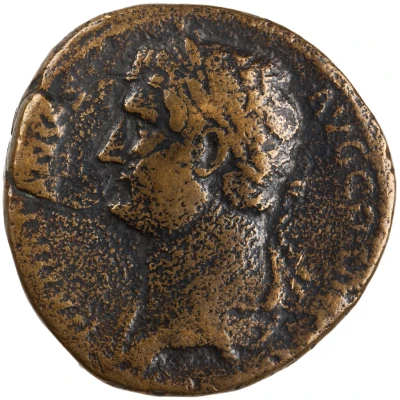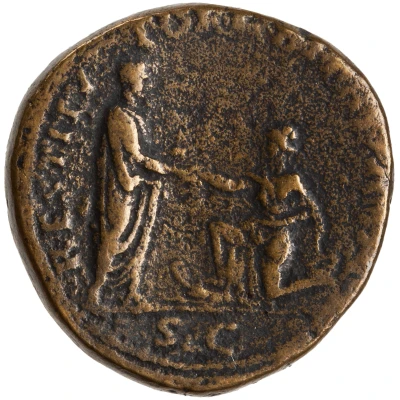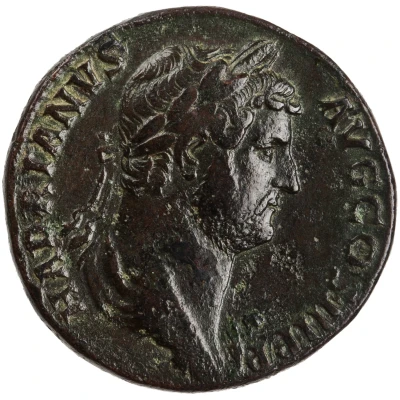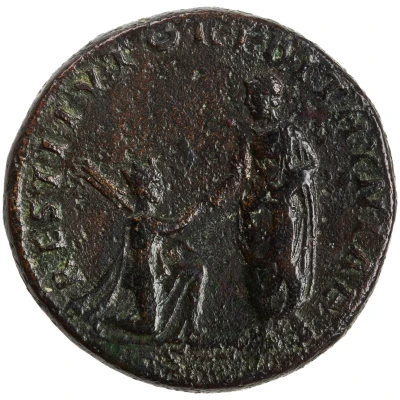Sestertius - Hadrian RESTITVTORI BITHYNIAE S C; Bithynia
| Orichalcum | 25 g | 32.5 mm |
| Issuer | Rome › Roman Empire (27 BC - 395 AD) |
|---|---|
| Emperor | Hadrian (Publius Aelius Hadrianus) (117-138) |
| Type | Standard circulation coin |
| Years | 130-133 |
| Value | 1 Sestertius = ¼ Denarius |
| Currency | Denarius, Reform of Augustus (27 BC – AD 215) |
| Composition | Orichalcum |
| Weight | 25 g |
| Diameter | 32.5 mm |
| Shape | Round (irregular) |
| Technique | Hammered |
| Demonetized | Yes |
| Updated | 2024-10-06 |
| Numista | N#256321 |
|---|---|
| Rarity index | 100% |
Reverse
Hadrian standing right, holding scroll and raising kneeling Bithynia, holding acrostolium and resting foot on prow.
Script: Latin
Lettering:
RESTITVTORI BITHYNIAE
S C
Translation:
Restitutori Bithyniae. Senatus Consultum.
To the restorer of Bithynia. Decree of the senate.
Comment
Source: Online Coins of the Roman Empire (OCRE)Interesting fact
One interesting fact about this coin is that the metal used to make it, orichalcum, is a rare and valuable alloy that was highly prized in ancient times. Orichalcum was made from a combination of gold, silver, and copper, and was known for its durability and resistance to corrosion. It was often used to make high-value coins and other objects, and was considered a symbol of wealth and power.



